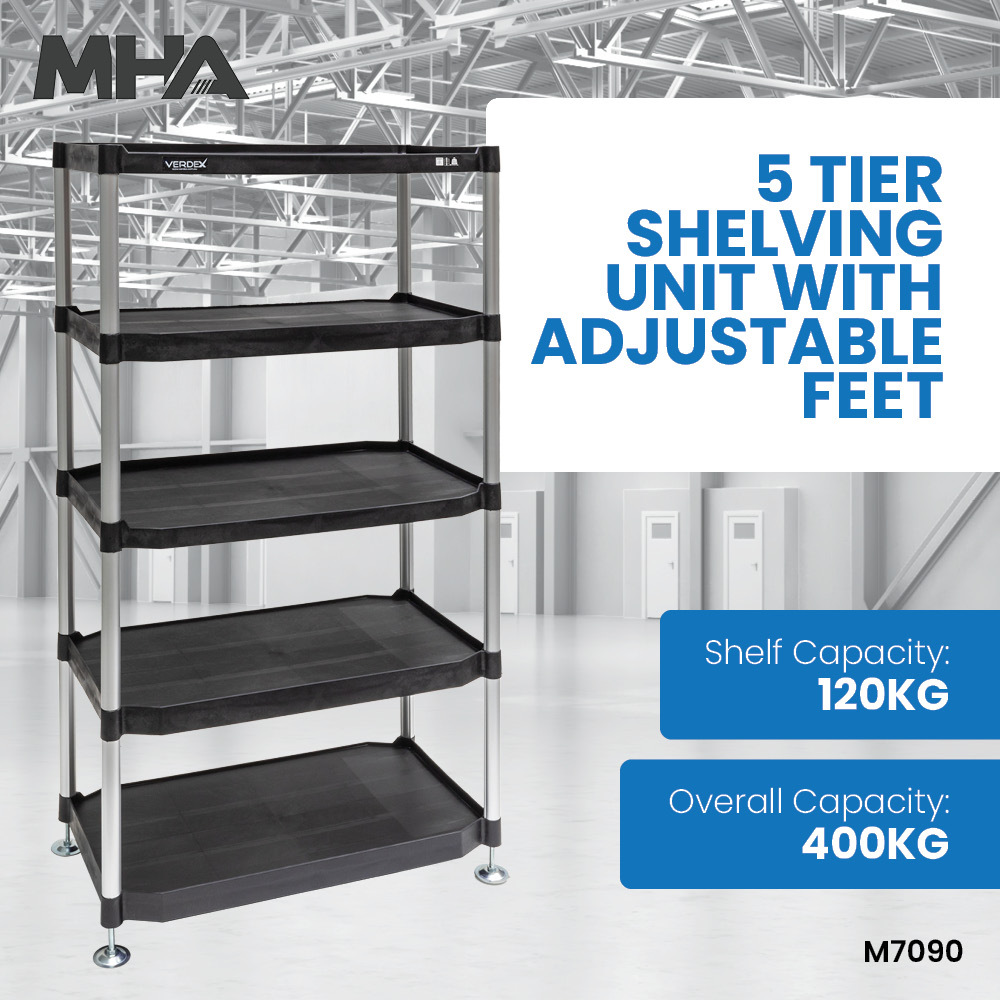Shelving Solutions: Maximizing Storage Efficiency
Date Posted:25 July 2024
Embracing the versatility and benefits of shelving systems enables organizations to maintain organized, productive, and sustainable environments conducive to achieving operational excellence in today's dynamic business landscape.
Shelving systems are essential components of storage solutions across various industries, offering efficient organization and maximizing space utilization. From warehouses and retail stores to offices and homes, shelving plays a crucial role in maintaining order, facilitating inventory management, and optimizing workflow efficiency. This article explores the functionality, benefits, types, applications, and considerations for choosing and implementing shelving systems in diverse environments.
Functionality of Shelving Systems
1. Storage Optimization: Shelving systems provide vertical storage space, allowing organizations to maximize floor space utilization. They accommodate a wide range of items, from small components and documents to bulky goods and inventory, ensuring efficient storage and easy access.
2. Organization and Accessibility: By categorizing and arranging items on shelves, organizations enhance inventory management and workflow efficiency. Shelving systems facilitate systematic storage, quick retrieval of goods, and orderly workspace environments.
3. Flexibility and Customization: Modern shelving systems offer flexibility in design and customization to meet specific storage needs. Adjustable shelves, modular configurations, and expandable units adapt to changing storage requirements and operational demands.
4. Durability and Stability: High-quality shelving systems are designed to withstand heavy loads and frequent use. They provide stability and support for stored items, ensuring safety and minimizing the risk of shelving failures or collapses.
5. Space Utilization: Shelving maximizes vertical space, allowing organizations to store more items within a smaller footprint. It promotes efficient space utilization in warehouses, retail stores, offices, and residential settings, optimizing storage capacity without expanding physical footprint.
Types of Shelving Systems
1. Boltless Shelving: Boltless shelving systems feature adjustable shelves that can be quickly assembled without the need for bolts or tools. They are ideal for warehouses, retail stores, and garages, offering easy installation and reconfiguration.
2. Wire Shelving: Wire shelving units are lightweight, durable, and resistant to rust and moisture. They are suitable for environments requiring ventilation and visibility, such as kitchens, pantries, and medical storage areas.
3. Industrial Shelving: Industrial shelving systems are heavy-duty units designed for storing bulky items, equipment, and inventory in warehouses and manufacturing facilities. They offer high load capacities and withstand rigorous operational conditions.
4. Mobile Shelving: Mobile shelving units feature movable bases or tracks that compact shelves together to save space. They are used in offices, libraries, and archives to maximize storage density and facilitate easy access to stored items.
5. Retail Shelving: Retail shelving solutions include gondola shelving, display racks, and modular units designed to showcase merchandise effectively. They enhance product visibility, promote retail sales, and support organized store layouts.
Benefits of Shelving Systems
1. Improved Organization: Shelving systems promote systematic storage and categorization of items, reducing clutter and improving workspace organization. They streamline inventory management and enhance operational efficiency.
2. Enhanced Accessibility: By providing easy access to stored items, shelving systems facilitate faster retrieval and replenishment of goods. They minimize downtime, improve workflow productivity, and support timely order fulfillment.
3. Space Efficiency: Shelving maximizes vertical space utilization, allowing organizations to store more items within limited floor space. It optimizes storage capacity, reduces storage costs, and supports scalable growth.
4. Versatility and Adaptability: Versatile shelving systems accommodate diverse storage needs and operational requirements. They can be customized with accessories such as dividers, bins, and labels to enhance functionality and organization.
5. Safety and Durability: Well-designed shelving systems ensure safety by securely storing heavy or fragile items. They are constructed from robust materials and feature safety features such as reinforced shelves and anti-tip mechanisms.
Applications of Shelving Systems
1. Warehousing and Logistics: In warehouses and distribution centers, shelving systems organize inventory, facilitate stock rotation, and optimize picking processes. They support efficient logistics operations and minimize order fulfillment times.
2. Retail and Merchandising: Retail shelving displays merchandise attractively, enhances product visibility, and encourages consumer engagement. Shelving systems create organized store layouts, promote brand identity, and drive retail sales.
3. Office and Workplace: In office environments, shelving systems store documents, supplies, and equipment, promoting workspace organization and productivity. They create functional storage solutions for offices, meeting rooms, and employee workstations.
4. Healthcare and Laboratories: Shelving systems in healthcare settings store medical supplies, patient records, and laboratory equipment. They ensure sterile storage conditions, support infection control measures, and streamline healthcare operations.
5. Residential and Garage Storage: At home, shelving systems organize household items, tools, and seasonal belongings in garages, closets, and pantries. They maximize living space, facilitate clutter-free environments, and improve home organization.
Considerations for Choosing Shelving Systems
When selecting shelving systems for specific applications, consider the following factors:
1. Storage Requirements: Assess the types of items to be stored, their sizes, weights, and storage volumes. Choose shelving systems with appropriate load capacities, shelf depths, and configurations to accommodate specific storage needs.
2. Space Availability: Evaluate available floor space and ceiling heights to determine the optimal shelving dimensions and configurations. Consider vertical storage options to maximize storage capacity without compromising accessibility.
3. Durability and Maintenance: Select shelving systems constructed from durable materials such as steel, aluminum, or reinforced plastics. Ensure ease of maintenance, including cleaning, corrosion resistance, and shelf adjustability.
4. Installation and Assembly: Consider ease of installation and assembly methods required for shelving systems. Boltless and modular units offer quick setup without specialized tools, while heavy-duty systems may require professional installation.
5. Budget and Long-Term Value: Balance initial investment costs with long-term benefits and durability. Choose shelving systems that offer scalability, customization options, and warranty coverage to support future storage needs and operational growth.
Shelving systems are integral to efficient storage management, organization, and productivity across various industries and environments. By maximizing space utilization, enhancing inventory control, and improving accessibility to stored items, shelving systems optimize operational workflows and support business growth. Investing in well-designed shelving solutions tailored to specific storage requirements promotes workplace efficiency, reduces operational costs, and enhances overall workspace functionality. Embracing the versatility and benefits of shelving systems enables organizations to maintain organized, productive, and sustainable environments conducive to achieving operational excellence in today's dynamic business landscape.
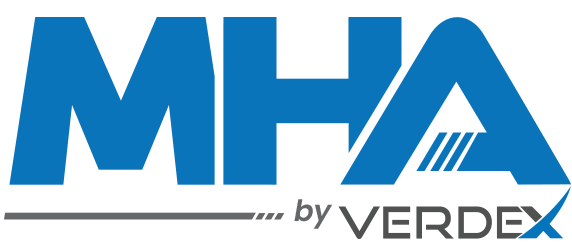
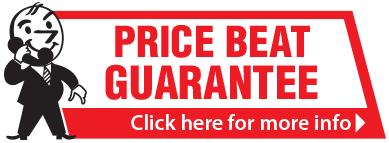
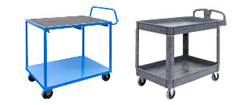

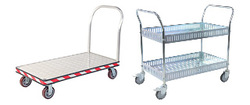
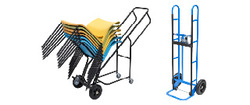
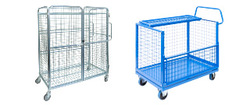
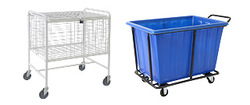
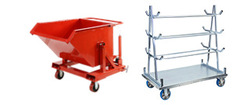
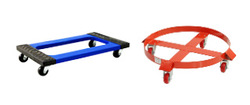
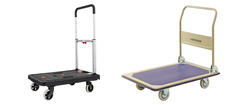
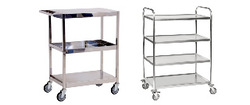
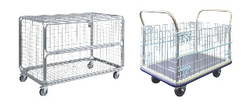
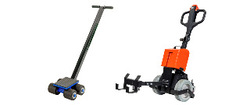
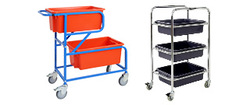
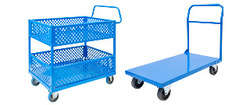
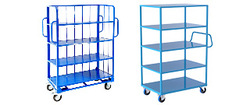
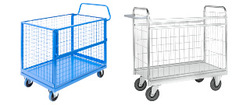
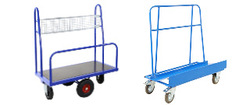
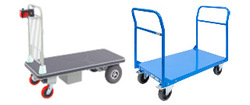
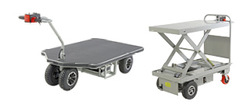
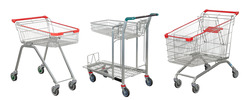
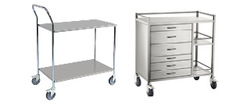
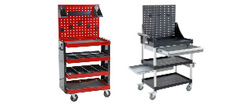
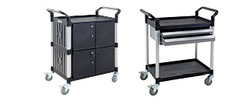
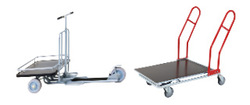
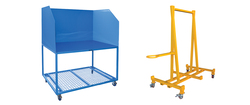



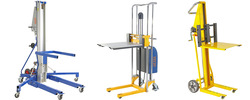



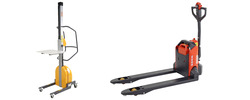
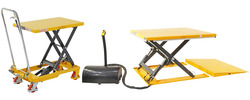
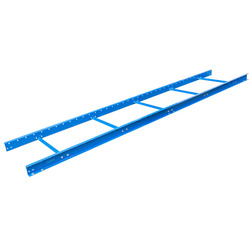
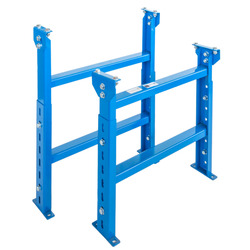
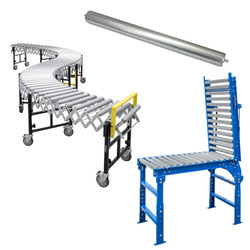
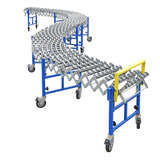


















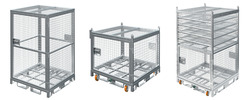

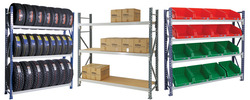
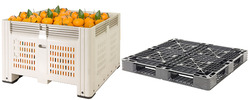
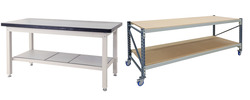
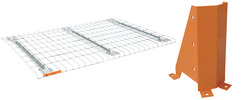
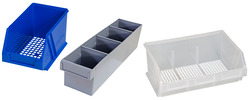

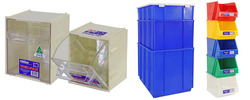

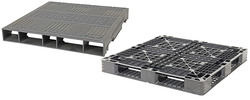
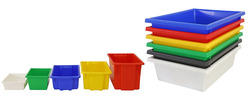
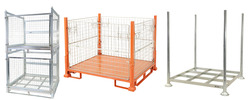
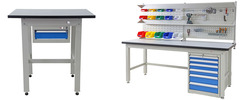
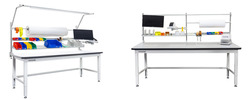

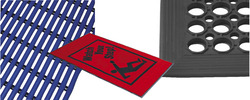
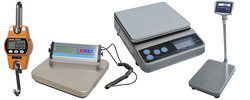



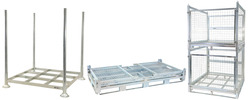
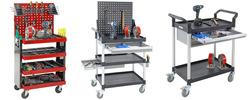
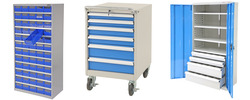

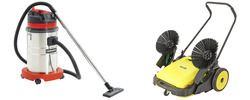











 Trolleys / Hand Trucks
Trolleys / Hand Trucks 2 Tier Trolleys
2 Tier Trolleys 3 Tier Trolleys
3 Tier Trolleys Aluminium Trolleys
Aluminium Trolleys Appliance & Hand Trucks
Appliance & Hand Trucks Cage Trolleys
Cage Trolleys Cleaning Carts & Trolleys
Cleaning Carts & Trolleys Construction Trolleys
Construction Trolleys Dollies
Dollies Foldable Trolleys
Foldable Trolleys Hospital Trolleys
Hospital Trolleys Laundry/Linen Trolleys
Laundry/Linen Trolleys Load Skates & Tow Tugs
Load Skates & Tow Tugs Mail / Office Trolleys
Mail / Office Trolleys Multi Purpose Trolleys
Multi Purpose Trolleys Multi-Tier Shelf Trolleys
Multi-Tier Shelf Trolleys Order Picking Trolleys
Order Picking Trolleys Panel Cart Trolleys
Panel Cart Trolleys Platform Trolleys
Platform Trolleys Powered Trolleys
Powered Trolleys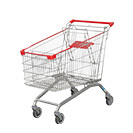 Shopping Trolleys
Shopping Trolleys Stainless Steel Trolleys
Stainless Steel Trolleys Tool Trolleys
Tool Trolleys Utility Carts
Utility Carts Warehouse Trolleys
Warehouse Trolleys Custom Trolleys
Custom Trolleys Lifting Equipment
Lifting Equipment Forklift Attachments
Forklift Attachments Jib Attachments
Jib Attachments Lifting Hoists & Pallet Hooks
Lifting Hoists & Pallet Hooks Manual Stackers & Lifters
Manual Stackers & Lifters Pallet Jacks
Pallet Jacks Pallet Lifters
Pallet Lifters Pallet Rotators & Dispenser
Pallet Rotators & Dispenser Powered Pallet Trucks & Electric Lifters
Powered Pallet Trucks & Electric Lifters Scissor Lift Trolleys and Tables
Scissor Lift Trolleys and Tables Conveyor Equipment
Conveyor Equipment Conveyor Frames
Conveyor Frames Conveyor Stands
Conveyor Stands Roller Conveyors
Roller Conveyors Skate Wheel Conveyors
Skate Wheel Conveyors Access Equipment
Access Equipment Container & Yard Ramps
Container & Yard Ramps Step Stools & Ladders
Step Stools & Ladders Work Platforms & Crane Cages
Work Platforms & Crane Cages Drum Handling
Drum Handling Drum Storage & Bunding
Drum Storage & Bunding Drum Trolleys & Lifters
Drum Trolleys & Lifters Forklift Drum Handling
Forklift Drum Handling Containment & Spillage
Containment & Spillage Aerosol Cans Storage Cages
Aerosol Cans Storage Cages Bunded Pallets & Storage
Bunded Pallets & Storage Corrosive Goods Storage Cabinets
Corrosive Goods Storage Cabinets Flammable Liquid Cabinets
Flammable Liquid Cabinets Forklift Gas Storage Cages
Forklift Gas Storage Cages Gas Cylinder Storage
Gas Cylinder Storage Site Storage
Site Storage Spill Kits
Spill Kits Stillage Cages
Stillage Cages Waste Handling
Waste Handling Bin Lifters & Tippers
Bin Lifters & Tippers Plastic Waste Bins and Carts
Plastic Waste Bins and Carts Steel Waste and Tipping Bins
Steel Waste and Tipping Bins Storage Equipment
Storage Equipment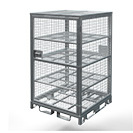 750 Series Cage Configurations
750 Series Cage Configurations Heavy Duty Cabinets & Benches
Heavy Duty Cabinets & Benches Heavy Duty Shelving
Heavy Duty Shelving Mega Bins & Pallets
Mega Bins & Pallets Packing Benches
Packing Benches Pallet Racking Accessories
Pallet Racking Accessories Parts Trays & Stor-Pak Bins
Parts Trays & Stor-Pak Bins Pegboard & Louvre Panels
Pegboard & Louvre Panels Plastic Bins
Plastic Bins Plastic Handling Solutions Bins
Plastic Handling Solutions Bins Plastic Pallets
Plastic Pallets Stack & Nest Bins
Stack & Nest Bins Storage Cages
Storage Cages Workplace Equipment
Workplace Equipment Workbenches
Workbenches Modular Workbenches
Modular Workbenches Electric Height-Adjustable Workbenches
Electric Height-Adjustable Workbenches Floor Matting
Floor Matting Industrial Weighing Scales
Industrial Weighing Scales Pallet Wrapping & Packaging Machinery
Pallet Wrapping & Packaging Machinery Ramps
Ramps Stationery Cupboards
Stationery Cupboards Storage and Stillage Cages
Storage and Stillage Cages Tool Trolleys
Tool Trolleys Tooling Cabinets
Tooling Cabinets Wheelie Bins
Wheelie Bins Workshop Equipment
Workshop Equipment Safety Equipment
Safety Equipment Gloves and PPE
Gloves and PPE Pallet Rack Post Protectors
Pallet Rack Post Protectors Safety Barriers & Bollards
Safety Barriers & Bollards Safety Knives & Cutters
Safety Knives & Cutters Signs and Traffic Supplies
Signs and Traffic Supplies Tool & First Aid Boxes
Tool & First Aid Boxes Construction Equipment
Construction Equipment Concrete Equipment
Concrete Equipment General Site Equipment
General Site Equipment Lifting Equipment
Lifting Equipment Site Storage
Site Storage Waste
Waste 
